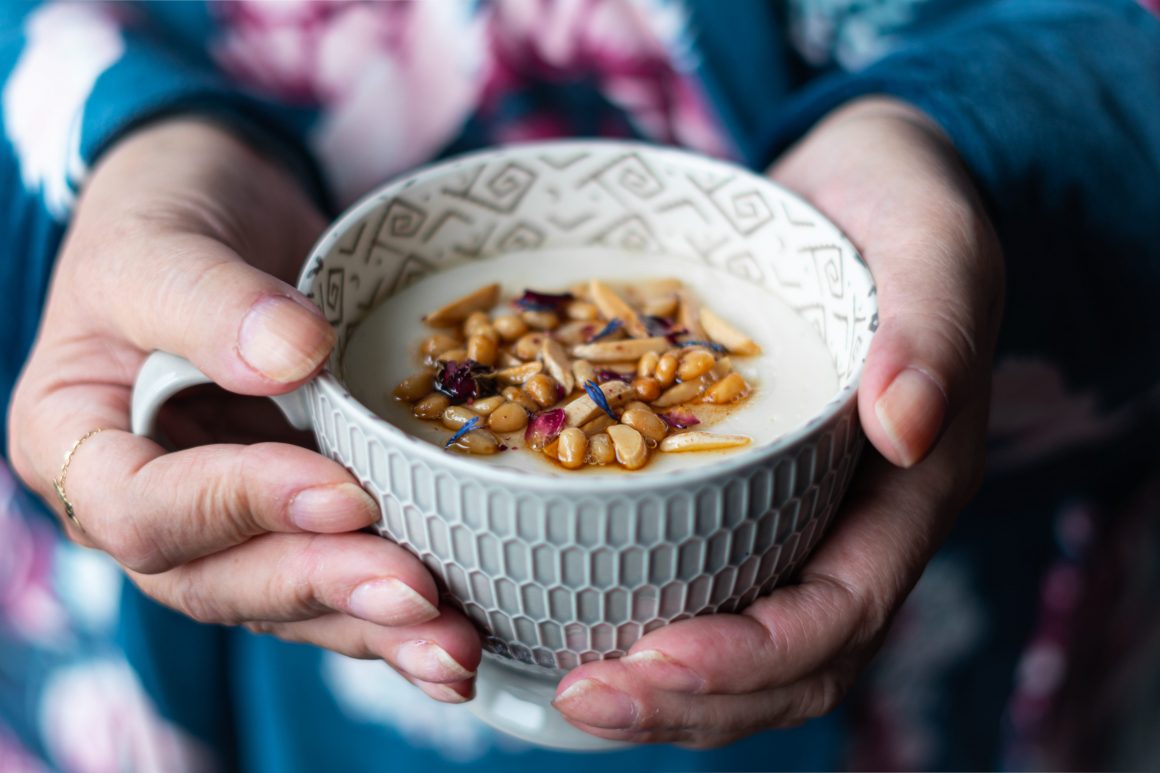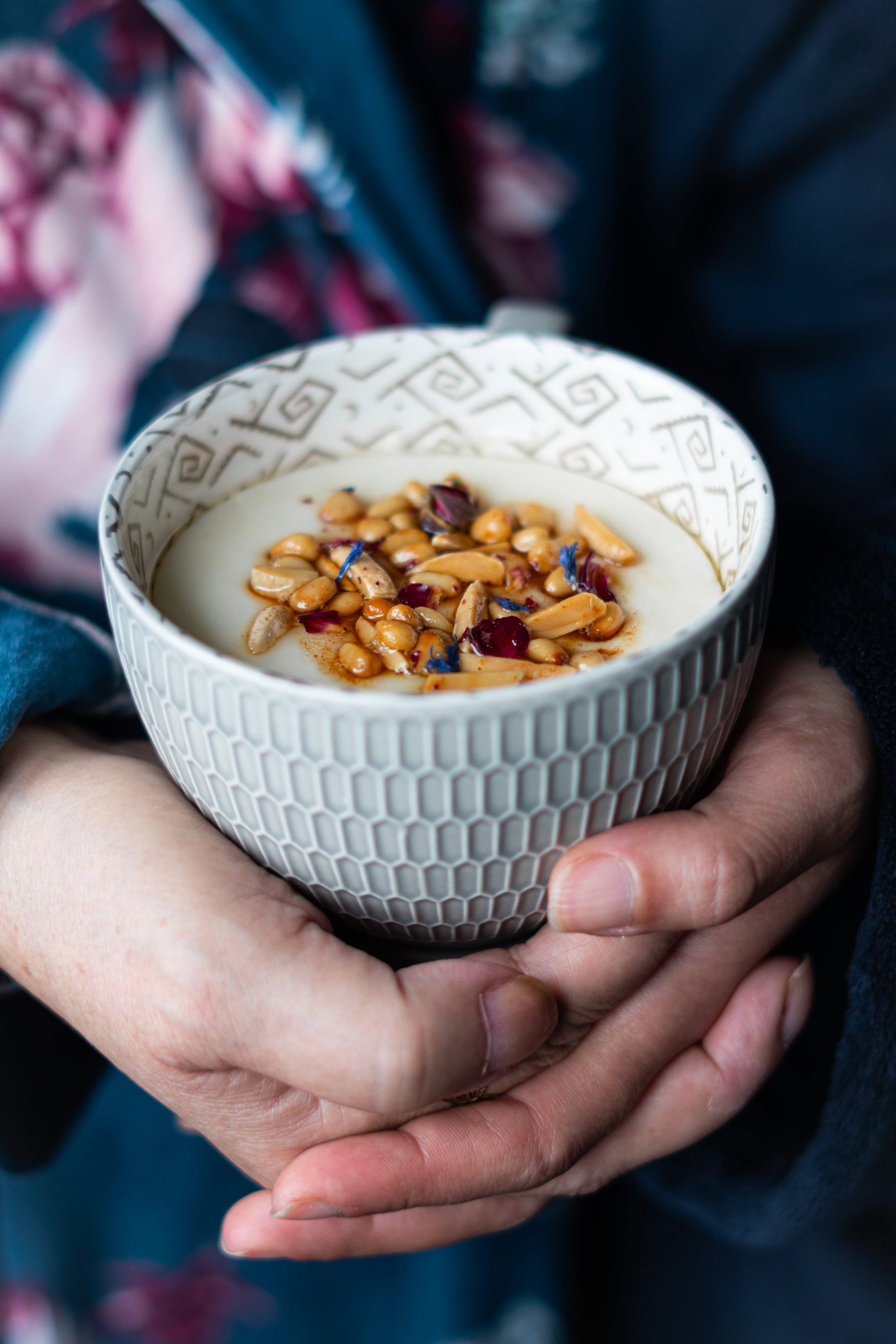Haririyeh: Mama’s Sweet Floral Bechamel Recipe
⅔ cup All-purpose Flour, unbleached
5 tbsp Sunflower Oil
3 cups Full-fat Milk
½ cup Sugar
1 tsp Rose Water
1 tbsp Pine Nuts
1 tbsp Almonds, slivered
1 tbsp Butter
A sweet bechamel with floral notes topped with brown butter toasted nuts; Haririyeh is an original recipe that my mama used to throw together when my siblings and I were very young. Getting inspired by the idea of Pain Perdu and Lebanese milk-based puddings, she decided to thicken some milk with a roux and flavour it with the typical floral flavours of Lebanese desserts. The result is a silky smooth warm pudding called Haririyeh – which roughly translates to “silky” in Arabic!
To start preparing your Haririyeh, place the flour and oil in a saucepan on medium heat and whisk until they are well incorporated. Cook the roux until it is light blond, smells nutty, and faintly like shortbread cookies. Reduce the heat to low and while still whisking, slowly pour the milk onto the roux. Once the milk mixture has thickened slightly, add the sugar and whisk until the sugar fully dissolves. Remove the saucepan off the heat, add the rose water and mix until it is fully incorporated.
In a small skillet on medium heat, add the butter, pine nuts, and slivered almonds and toast them until the butter browns slightly and the nuts turn golden brown.
Scoop the Haririyeh into a bowl then top it with the toasted nuts and a drizzle of brown butter. Haririyeh is best enjoyed warm.
Make sure you give Haririyeh: Mama’s Sweet Floral Bechamel recipe a try, snap a photo, and share it with us on our socials.
*Follow us on Social Media (links below) and don’t forget to sign up to our mailing list and get access to Chef Rawan’s FREE Lebanese Tapas recipe booklet!
**If you want to taste any of my Lebanese breakfast creations, book a stay at Gite O’bordeleau where you can also experience our nafas Culinary Retreats.
***If you are interested in exploring the history of Middle Eastern cuisine, check out this 13th-century book called Scents and Flavors: A Syrian Cookbook.


